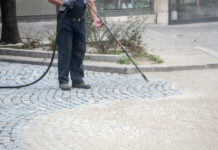As winter approaches, now is the time to inspect and address any issues with your home’s foundation. Cold temperatures and snowfall can worsen existing problems, leading to expensive repairs down the line. Taking preventative action in the fall helps safeguard your home’s stability and efficiency during the harshest months.
Inspect for Cracks and Shifting
Walk around your home’s exterior and check for visible cracks or gaps in the foundation. Even small fissures can expand with freeze-thaw cycles, allowing moisture to seep in and cause interior damage. Mark any areas of concern and monitor for changes.
Seal Foundation Cracks
If you spot minor cracks, use a concrete sealant to fill them before the first frost. This barrier keeps moisture out and prevents ice from forming and worsening the damage. For larger or expanding cracks, it’s best to consult a professional.
Improve Drainage Around the Foundation
Make sure your yard slopes away from the house and that your gutters and downspouts are clear and directing water at least five feet away. Pooling water near the foundation can freeze and lead to structural pressure and leaks.
Check the Basement for Signs of Moisture
Inspect your basement walls and floors for damp spots, musty odors, or efflorescence—chalky white residue left by water. These may indicate a compromised foundation seal, which should be addressed before winter intensifies.
Addressing foundation repairs before the first snowfall is an investment in your home’s longevity and your peace of mind. By inspecting for cracks, sealing minor gaps, optimizing drainage away from your walls, and checking the basement for dampness, you’ll prevent small issues from becoming costly winter emergencies. Schedule these maintenance steps now—while the weather’s still mild—to ensure your foundation remains strong, dry, and stable through the season ahead.



